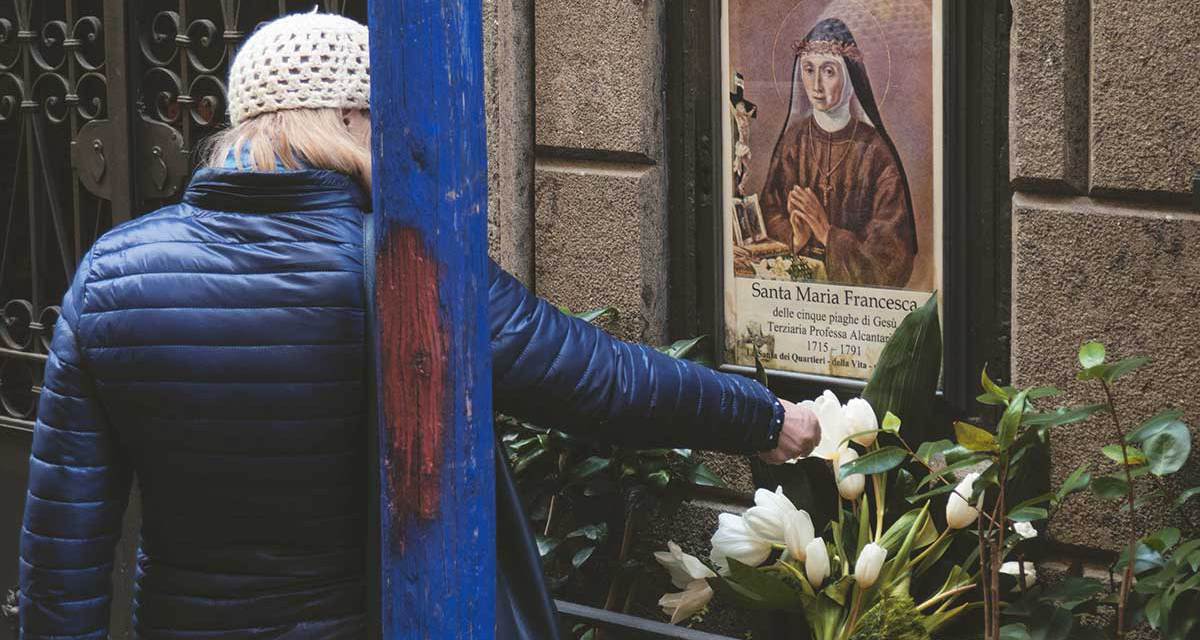The family history of Santa Maria Francesca is scattered about the Internet, consequently we will add content here as we find it. You are welcome to add to this page by simply sending us an e-mail at: sexton@galloworldfamily.org
____________________________________________________________
Santa Maria Francesca of the Five Wounds of Christ
Anna Maria Gallo was born in Naples on March 25, 1715. She died October 6, 1791 at age 76. Her family belonged to the middle class. Her father, Francesco Gallo, was a severe, avaricious man with a passionate temper, and from him the saint had much to suffer. He subjected her to much ill-treatment and hard, incessant labour which often brought her to the verge of the grave.
Barbara Basinsin, her mother, however, was gentle, pious, and patient in bearing with the brutal conduct of her husband. Before her birth St. John Joseph of the Cross, O.F.M., and St. Francis de Geronimo, S.J., are said to have predicted Mary’s future sanctity. At the age of seven she was admitted to Holy Communion, which she was subsequently in the habit of receiving daily.
When Mary Frances was sixteen years old, her father sought to force her into a marriage with a rich young man, but the saint firmly refused, and instead asked leave to enter the Third Order of St. Francis. This request was at length granted her through the influence of Father Theophilus, a Friar Minor. At her reception among the Tertiaries of St. Peter of Alcantara, 8 September, 1731, she took the name of “Mary Frances of the Five Wounds of Jesus” out of devotion to the Blessed Virgin, St. Francis, and the Sacred Passion.
Her body is said to have been signed with the stigmata, which, at her prayer, took no outward, visible appearance, and on Fridays, especially the Fridays of Lent, she felt in her body the very pains of the Passion. During her whole life the saint had much to suffer from bodily ills, and to her physical suffering was added mental pain from the persecution of her father, sisters, and other persons. Even her confessors, to test her sanctity, made her suffer by the severity of their direction. But over and above these mental and physical sufferings she imposed upon herself voluntary penances, strict fasts, hair-shirts, and disciplines. Her prayers and advice saved many souls from dangers.
Priests, religious, and pious persons went to her for light and counsel. Her charity and compassion, especially toward the afflicted and miserable, knew no bounds. Like St. Francis, Mary Frances had a tender devotion to the Infant Jesus, the Holy Eucharist, and the Blessed Virgin. The last thirty-eight years of her life were spent in the house of a pious priest, Giovanni Pessiri.
She was buried in the church of the Alcantarines, Sta. Lucia del Monte, at Naples, which contains the tomb of St. John Joseph of the Cross. She was declared Venerable by Pius VII, 18 May, 1803, beatified by Gregory XVI, 12 November, 1843, and canonized by Pius IX, 29 June, 1867. Her feast on 6 October is kept by the Friars Minor and Capuchins as a double of the second class, and by the Conventuals as a double major.
Content contributed by:
Kevin Knight
New Advent
